Nestled in the mountains of the Himalayas, the tiny country of Bhutan, the Land of the Thunder Dragon, has a unique, spellbinding topography and cultural heritage that can be matched by few places in the world today. Both the nature and culture of Bhutan has been carefully protected over the centuries, leaving a nation state untouched by the influences of modernity, and provide a true escape into nature and Himalayan heritage. Despite its small size and restricted tourism (people from outside of South Asia need to avail government-approved tours), Bhutan is high on the list of many veteran travelers, and for a good reason – it proves sightseeing opportunities of a lifetime. Here are some must-visit tourist spots of Bhutan –
Paro –
Home to the country’s only international airport, the ancient valley of Paro is a historic town, home to many ancient and historical ruins and sights. Stepping off from the plane and straight into the heart of Bhutan, visitors will find themselves greeted by Buddhist monks and prayer flags, Himalayan architecture, and unblemished nature all around them. The must see spots of Paro include –
- Such is the beauty of Bhutan that even the airport itself is a tourist site! The Paro Airport viewing point provides a vista view of the airport, the Paro river, and the lush greenery around it. Considered to be amongst the most beautiful airports in the world, it is also one of the most challenging, and seeing take off and land is an extremely exciting watch.
- What better place to be acquainted with a culture than a place dedicated to it? The National Museum at Paro hosts the most extensive collection of artifacts dating back to 4000 BCE, and has numerous trinkets and mementos for travelers. Its location in an old watch tower further make it an amazing site to visit and photograph.
- Subject of one of the most iconic photos of Bhutan, the Taktsang/ Tiger’s Nest Monastary is a majestic blend of nature and heritage, with the monastery complex perched on the side of a hill. A two hour trek to the top includes stunning views of the valley around, and the monastery is considered to be one of the most serene and peaceful of the country.
- While the Richen Pun Dzong is closed off for tourists, the architectural marvel is a must view even from the outside, and the rich history of the fortress takes care of the rest. Tourists can enjoy the Dzong courtyard and the water bridge beside it as they learn the history of this administrative building.
- Located at a drive of two hours from the Paro valley is the Chele La Pass, the highest pass in Bhutan which can be driven through. The 13,000 feet elevated road will take you through lush forests and rhododendron covered valleys, and mountain peaks are also visible from the high points. The pass also connects the Paro valley to the Haa valley.
Punakha

Located 1200m above sea level, the district of Punakha used to be the former capital of Bhutan till it was shifted to Thimphu in 1955. Facing stronger weather polarities than the rest of the country, this town also has a number of natural and heritage tourist spots, such as –
- The greatest and most majestic feats of the Dzong architecture, the Punakha Dzong is the second oldest and second largest Dzong in Bhutan. It houses numerous sacred relics of the Kagyu school of Buddhism, and is a regal white structure banked by two rivers. The Dzong is open to tourists when the monks residing in it move to Timphu for the summer months. The fortress has been listed in Bhutan’s tentative list for UNESCO heritage sites.
- For those looking for some thrills, the Mo Chhu river provides whitewater rafting opportunities, with stunning views of the area for you to enjoy afterwards. With courses of 16 and 10 kilometers, all that is required is comfortable clothes, a camera, and a nonchalance towards getting wet, and you are in for an experience of a lifetime.
- Jigme Dorji National Park is spread over several districts, including Punakha, and is also on Bhutan’s list of heritage sites. The varied biodiversity of plants and animals, including black bears, tigers, snow leopards, blue sheeps and numerous species of birds, it is a nature lover’s delight to visit.
- Completed in 2004 and commissioned by the Queen Mother of Bhutan, the Khamsum Yulley Namgyal Chorten was built to ward off evil and promote peace in the world. Surrounded by paddy fields and hills dotted with prayer wheels, this modern building is a stunning example of how ancient Buddhist architecture is preserved and revered in the country.
- The hot springs of the Koma Tsachu are located at an hour’s drive from Punakha, with an additional hike of two hours. The long traveling however, is quickly compensated by the invigorating water of the hot springs. Additional facilities, including compartmentalized rooms, solar lighting, and spaces for pitching tents make the experience more comfortable and enjoyable.
Thimphu
Turned into the capital of Bhutan in 1955, Thimphu is the largest city of Bhutan, and the fourth highest capital city in the world by altitude. Home to the monarchy, economic activities and administration, Thimphu has been carefully constructed and regulated to reflect Bhutan’s culture in all its aspects, including architecture, literature, and dress code, despite the emergence of the city as a metropolis. Major tourist sites here include –
- In its efforts to enable visiting tourists to gain an authentic experience of the Bhutanese lifestyle without undue stress to nature and local inhabitants, the Simply Bhutan living museum enables tourists to engage in many activities, including dressing up in the native clothes, practicing archery, distilling the local alcohol arak etc., all the while being guided into the history and heritage of the Himalayan country.
- Home to the royal family, the majestic Dechencholing Palace combines stunning architecture and history. Built in the traditional style of Bhutanese architecture, the palace holds both artefacts and a complete history about the royal family of Bhutan, who have been ruling over the reunified country for more than a century now.
- The Thimpu Dzong is yet another architectural marvel in its own right, but it comes alive during the Teschu celebrations of the capital city, when its courtyard serves as the location for numerous song and dance performances. Seeped in tragic history, the Dzong has been destroyed five times till date, but has always been reconstructed, and its white-red-gold colors and tiered roofs are an icon of Bhutan now.
- If you want to live and shop like the locals do, the Thimphu weekend market is a must visit. Traders from distant villages begin to throng the city Thursday night, and by Saturday morning, wares like incense, herbs, vessels and clothes are all around. The market also gives an opportunity to try local delicacies such as dried fish, red rice, and wild honey.
- For those interested in scholarly pursuits and history, the National Library of Bhutan houses an extensive collection of Budhhist texts and manuscripts dating back centuries, carefully preserved and documented here. Established in 1967, the library has since began a National Memory Bank, containing old records, letters and micro flims of importance to the Bhutanese people.
Bumthang

Containing the greatest number of sacred and ancient sites in the country, the district of Bumthang is ringed by four mountains, and the area itself is a beautiful valley known for its greenery. Alongside the many ancient temples and monasteries, the valley of Bumthang is also known for the cultivation of wheat, dairy products and potatoes. Some famous tourist spots in Bumthang include –
- The Jambay Lhakhang or the temple of Maitreya is a small but stunning piece of Buddhist architecture located in the district. According to legends, it was one of the hundred and eight temples built by a Buddhist Tibetan King in a single day in order to keep a demoness tied to the earth, and to prevent her body from reforming and terrorizing the followers of Buddhism.
- Yet another site with a rich and fascinating history associated with it, the Kurjey Lakhang is a set of three temples. The oldest one is believed to contain the imprint of the Buddhist Guru Rinpoche, the second was constructed at the site the Guru had meditated, and a third was added by the current Queen Grandmother of Bhutan. A hundred and eight chorten (stupa) wall rings the temple complex
- Known colloquially as the ‘burning lake’, the Mebar Tsho is located at a forty minute drive from the heart of Bumthang. Of special importance to pilgrims, the lake is associated with the stories and legends of the Buddhist Guru Rinpoche. Dotted with prayer flags, this serene sight also offers a beautiful natural scenery that delights tourists.
- Located in the Thang valley of Bumthang, the Choling Palace Museum is a historical and religious site converted by its owners into a museum, thus providing visitors with a deep and intimate insight into the culture of the country. Housing artefacts and household items, the museum helps shed a light on the rural life in the country.
- Known as the castle of the white bird, the Jakar Dzong was initially built to be a monastery, but today houses the administrative functions of the district. The place hosts the Jakar Tsechu and its famous masked dances. Built in the typical red, white and gold of the Himalayan style, the Dzong is both an architectural beauty and an excellent vantage point to enjoy the sights of the Bumthang valley.
Wangdue
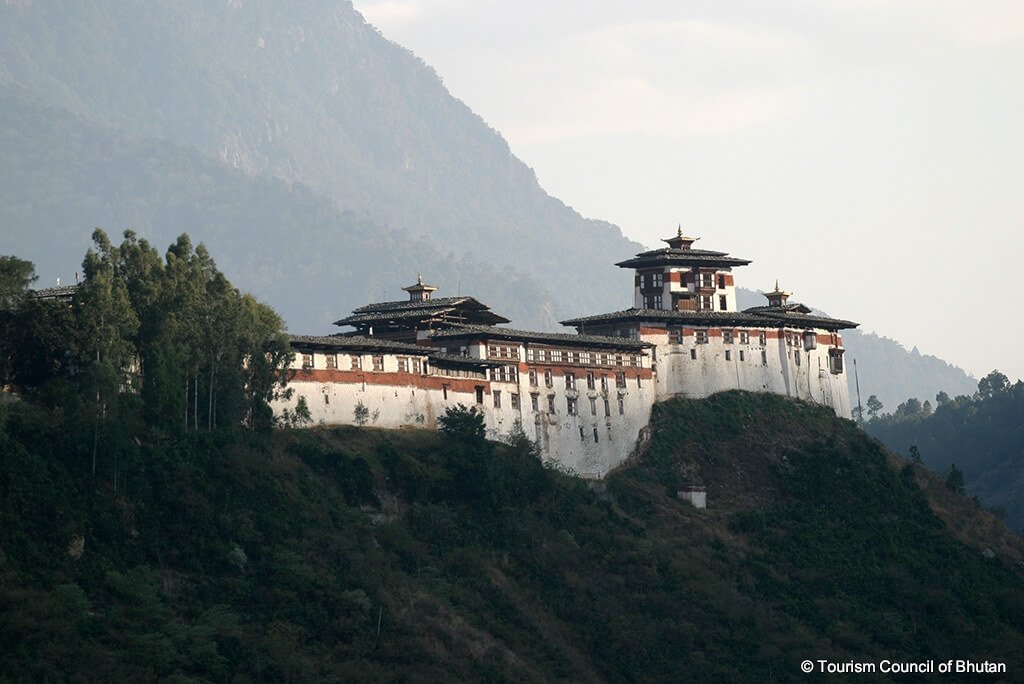
Located in the heart of Bhutan, Wangdue Phodrang is a district dominated by the Dzong of the same name. A place of both ecological and historical significance, the site is listed in Bhutan’s tentative UNESCO list, and much of its greenery is protected by law and through the Jigme Dorji National Park. Places of interest in this region include –
- The Wangdue Dzong was constructed in the 17th century, and the fortress was an icon of the region – till it burnt down in a tragic accident in 2012. Much of the historical artefacts were saved however. Though renovations are to go on till 2021, the area around it is still steeped in history and culture, and can provide a good viewing point for the confluence of the Dang and Punaka rivers.
- The Jigme National Park is one of Bhutan’s most salient ecological efforts, and the expansive protected area spans across numerous districts including Wangdue. Known for its varied biodiversity, the place is an excellent visit for nature lovers and birdwatchers. Several endangered species of the Himalayan region can also be glimpsed here.
- For those looking for a rustic experience that speaks true to the rural way of life in Bhutan, the Rinchegang village is an excellent visit. Facing the Wangdue Dzong, the village is a well-loved site for photography, and the stone carving practices of its populace may fascinating to many.
- En route to a number of trails and treks, the Phobjikha Valley is a glacial valley boasting of unparalleled natural landscape. A delight for nature lovers, the valley also hosts the famous black crane birds during the winter, and several other species of birds, animals and plants can be found here.
- Dedicated to the guardian deity of the region, the temple of Sha Radap is perched on a hill between two meandering water bodies, and is a temple of great importance to locals. Babies are often brought here to be named after their birth, and tourists can roll the dice inside the temple and pray for their own wishes too.
Phobjikha Valley
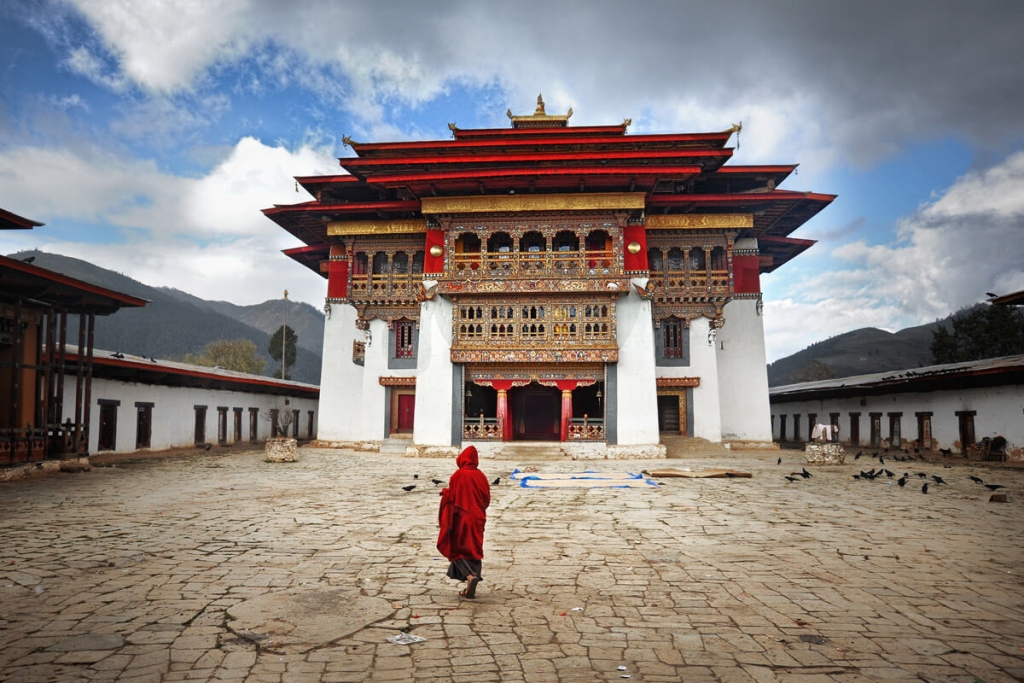
A large glacial valley with extravagant biodiversity, the Phobjikha valley has become a top destination for those looking to connect with nature and plug into the unique culture of the area. A host site to the endangered black cranes whose arrival is celebrated with a festival every October, the valley is also known for its Tsechu festival and many trek trails. Notable tourist destinations here include –
- So impressive is the Gangteng Monastery that the Phobjikha valley is also known by the monastery’s name. A product of the Nyingmapa sect of Buddhism, the monastery dates to the 17th century, and possesses an imposing structure with a canopy roof. Stories hold that the monastery was built completely through community effort, and a major renovation undertaken in 2008 has further enhanced the splendor of the sacred site.
- The valley also provides tourists an opportunity to learn about their beloved birds through the Black Necked Crane Information Centre. Equipped with a telescope, this centre allows individuals to observe the endangered species from a safe distance. It also has information about the valley and its history.
- A teaching centre to over three hundred Buddhist monks, the Kueunzang Chholing Shedra offers a unique insight for outsiders into the life of Bhutanese monks. Though the visit requires an advance notice, it enables visitors to engage in mediation, learn from the monks’ teachers, and know more about this spiritual path.
- To make the best out of the stunning natural beauty of the valley, tourists are highly recommended to undertake the Gangtey Nature Trail. With a track length of four kilometers accompanied by an elevation of 2000m, this day hike leads to numerous farmhouses and wetlands ringed by hills and clouds all around. The trail also doubles as a cyling path.
- Another memorable and highly relaxing experience of the valley is the hot stone baths, arranged by hotels and homestays. A traditional medical practice in the country, the baths involve river stones being heated and then dropped into oak or pine tubs filled with water. A perfect way to unwind after traveling and sightseeing, these baths are considered a must-have experience.
Haa Valley
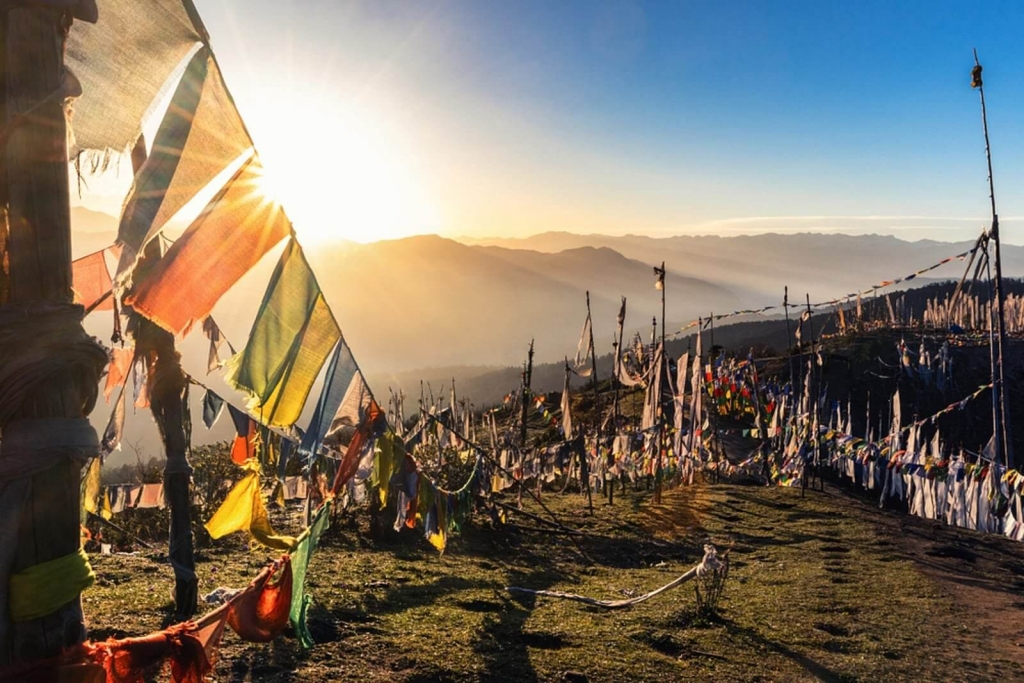
In proximity to Bhutan’s border with India and China, the Haa Valley is a hidden gem nestled amongst the hills. Reached through the Chele La pass, the valley is a stunning, quiet retreat with a small population rooted in traditional ways Of strategic importance to both India and China, the valley’s visit if often influenced by political factors. If reached however, it offers several charms, such as –
- In contrast to the other dzongs of Bhutan, the Haa Wangchuklo Dzong was built not as a defence mechanism, but rather as an administrative building for the royal government. However, the Dzong has since turned into a stronghold for the Indian military forces. Though access to it is thus restricted, the architecture of the place still makes it worth a visit.
- For those looking to spend a leisurely day in the lap of nature, the Haa Valley provides the perfect grounds. One can follow the Haa River flowing through the valley for miles. Featuring small bridges and bringing visitors in close contact with the local population, the river becomes an even more exhilarating visit during sunrise and sunset.
- Combining the spiritual and physical, the Haa valley also offers a number of treks that lead you to Goembas small Buddhist temples dotted around the valley’s many hills. Ranging from easy to difficult, these invigorating treks not only give you great exercise and the chance to see the way locals pray, but will also enable you to enjoy the stunning views of the valley.
- Home Stays are a great feature of the Haa Valley, and if visitors do get permission to stay, most prefer to do so in the house of a local family. Such a stay enables visitors to truly immerse themselves into the life and culture of the valley, and help them learn more about the history of the place, and also opens up opportunities to taste some delectable food and enjoy the famous Himalayan hospitality.
- In either your arrival or going away from the Haa Valley, visiting the Chele La Pass is an absolute must. One of the highest motorable passes in the world, the road is dotted with prayer flags, and the views make it seem like you truly are above the rest of the world, looking down at all the greenery. If the weather permits, you may also have the chance to view some of the Himalaya ranges’ high points.



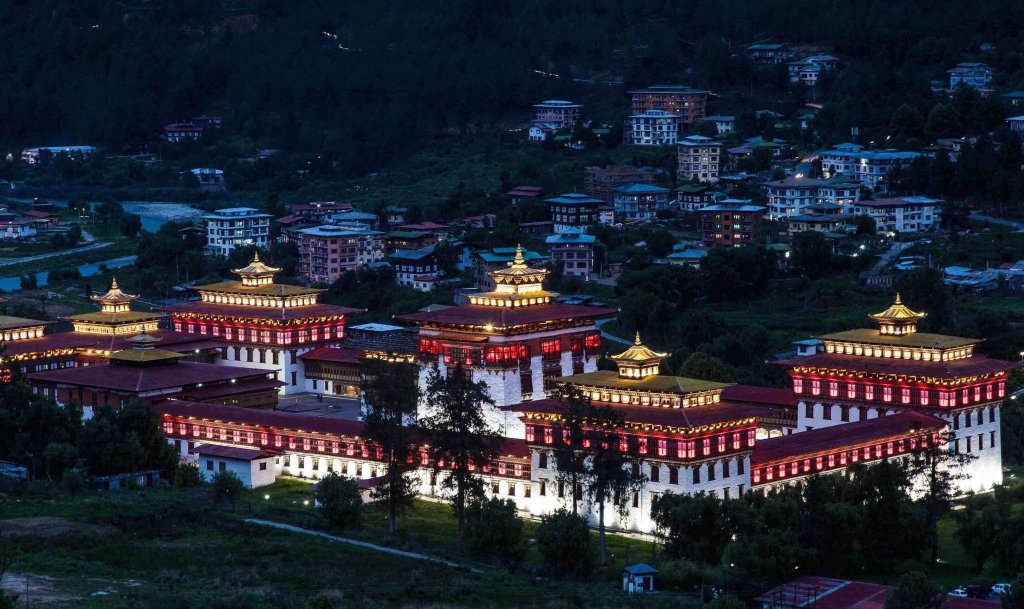
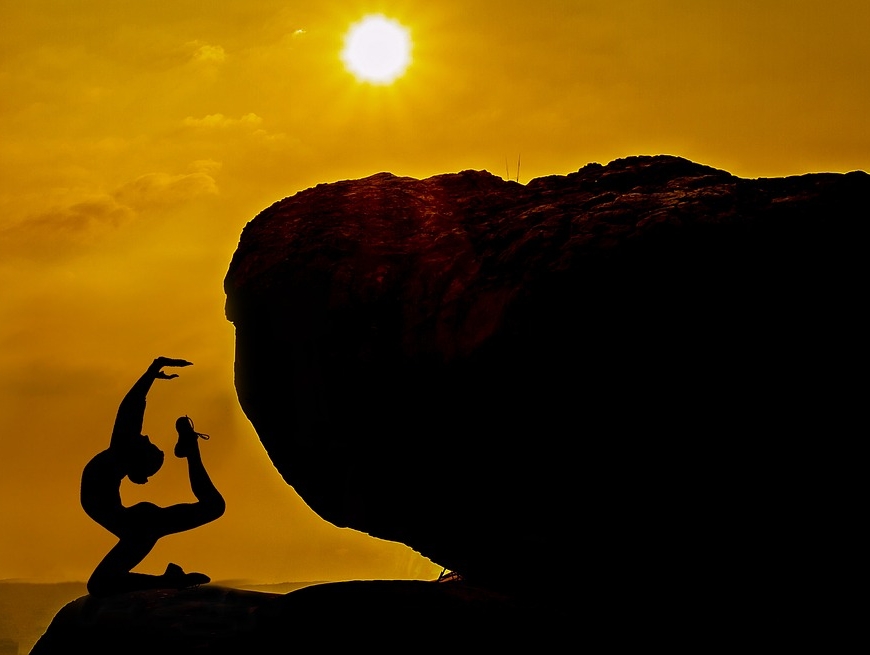


Add Comment